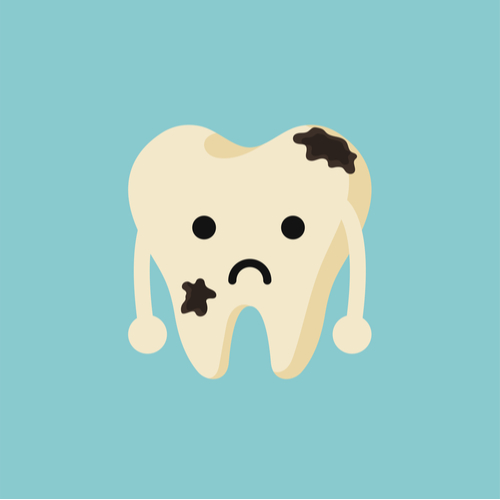
A cavity is a hole in a tooth that develops from tooth decay. Cavities are formed when acids in the mouth wear away the enamel that protects your teeth. Cavities can happen anywhere on a tooth, so no tooth area is safe. Cavities can occur due to eating sugary substances, constant snacking, and improper teeth brushing. Do you know 90 percent of adults aged 20 or more have at least one cavity? Cavities and tooth decay are the most common health problems. It is common among children and older people; however, anyone can get a cavity when not taking care of their teeth.
Tooth decay can happen to anyone and can take three years to reach the solid outer layer of tooth enamel. It first attacks the middle part, then moves to the innermost area, eventually affecting the whole tooth. There are three most common types of cavities such as root, pit and fissure, and smooth surface.
Root: Older people are more likely affected by the cavity as their gums recede due to aging. Gum exposes roots to plaque and acid, making root decay challenging to prevent.
Pit and fissure: Pit and fissure start at teenage years and then progress. It decays the upper part of the chewing surface and can also affect the front and back of the tooth.
Smooth-surface: If it shows up on the side of the tooth, it is called smooth-surface decay. It can appear in-between spaces of teeth.
The most important thing is to protect your teeth before it’s too late. It is advised to brush teeth twice a day for at least two minutes, floss, and use a mouth cleanser for oral hygiene. But if you see these signs, it means you might be developing a cavity.
Stains: Anything you eat, like food or beverage or tobacco, can stain your teeth. This is not the cavity itself but dentin, yellow or brown. It becomes visible when enough enamel wears away due to decay.
Tooth sensitivity: When holes in enamel expose the dentin, such exposed dentin gets irritated by bacteria in the mouth, causing sensations. When you eat something hot or cold and experience discomfort, irritation, or even pain, it can signify a cavity.
Holes in the teeth: Sometimes, the hole formed by bacteria in your teeth are not visible due to locations, but as it grows bigger, it may form a hole that is visible to the naked eye.
Bad breath: Cavities do not cause bad breath, but bacteria do. The cavities form a hole in your teeth that your toothbrush can’t reach, providing a place for bacteria. It leads to bad breath.
Bleeding gums: Plaque build-up can cause inflammation and show signs of gum disease and lead to a potential cavity.
If you are experiencing any of the above signs, you may reach out to Foothill Dental Care at (925) 961-5484 to schedule an oral health check-up today.
